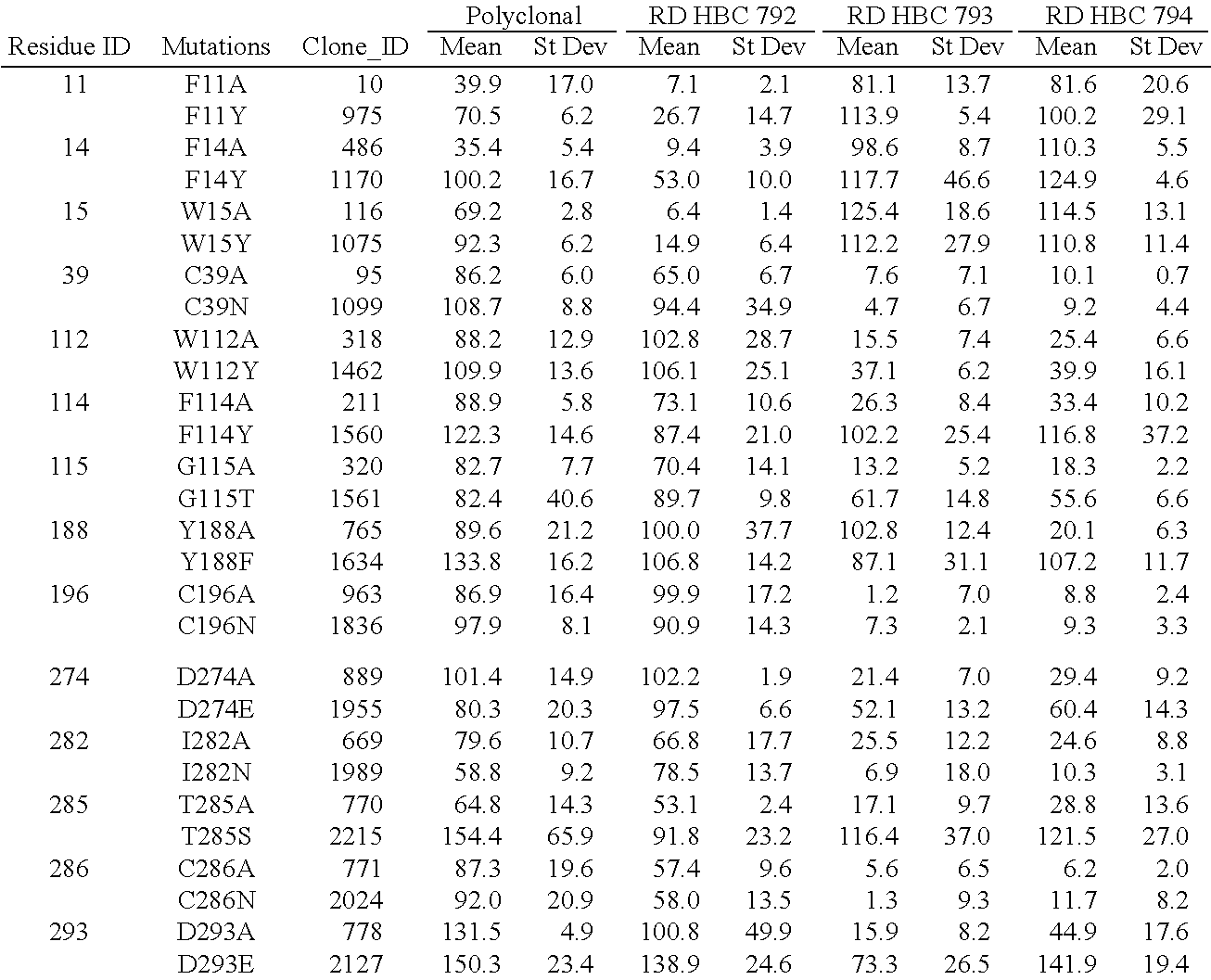Chemokine receptor binding polypeptides
a technology of chemokine receptors and binding polypeptides, which is applied in the direction of depsipeptides, dna/rna fragmentation, fungi, etc., can solve the problems of receptor desensitization, no therapies available to stop the decline of lung function or the progressive destruction of lung function
- Summary
- Abstract
- Description
- Claims
- Application Information
AI Technical Summary
Benefits of technology
Problems solved by technology
Method used
Image
Examples
embodiment 1
[0603]2. The polypeptide of embodiment 1 wherein said first antigen binding domain is capable of binding to a linear peptide consisting of the sequence of amino acids set forth in SEQ ID No. 7 and said second antigen binding domain is either not capable of binding or binds with lower affinity to said linear peptide.
[0604]3. The polypeptide of embodiment 1 or embodiment 2 wherein said first antigen binding domain is comprised within a first immunoglobulin single variable domain and said second antigen binding domain is comprised within a second immunoglobulin single variable domain of an antibody.
embodiment 3
[0605]4. The polypeptide of embodiment 3 wherein at least one of said first and second antigen binding domains is comprised within an antibody VL domain or a fragment thereof.
[0606]5. The polypeptide of embodiment 3 wherein at least one of said first and second antigen binding domains is comprised within an antibody VH domain or a fragment thereof.
[0607]6. The polypeptide of embodiment 4 or 5 wherein said first antigen binding domain is comprised in a VL domain or a fragment thereof and said second antigen binding domain is comprised in a VH domain or a fragment thereof.
[0608]7. The polypeptide of embodiment 4 or 5 wherein said first antigen binding domain is comprised in a VH domain or fragment thereof and said second antibody binding domain is comprised in a VL domain or a fragment thereof.
[0609]8. The polypeptide of any one of embodiments 3 to 7 wherein said first and second antigen binding domains are comprised within first and second domain antibodies (dAbs).
[0610]9. The polype...
embodiment 9
[0611]10. The polypeptide of embodiment 9 wherein each of said antigen binding domains is comprised within a VHH domain or fragment thereof from a single heavy chain of a heavy chain antibody derived from a Camelid or is a sequence-optimised, including humanised, variant thereof.
[0612]11. The polypeptide of embodiment 9 or 10 wherein each VHH sequence or fragment thereof includes one, two or three CDRs.
[0613]12. The polypeptide of any one of embodiments 9 to 11 wherein each VHH sequence has the structure: FR-CDR-FR-CDR-FR-CDR-FR.
[0614]13. The polypeptide of any one of the preceding embodiments wherein said at least two antigen binding domains are joined by a linker.
[0615]14. The polypeptide of any one of embodiments 3 to 13 which has the structure:[0616]FR1-CDR1-FR2-CDR2-FR3-CDR3-FR4—LINKER—FR5-CDR4-FR6-CDR5-FR7-CDR6-FR8
wherein if FR1-CDR1-FR2-CDR2-FR3-CDR3-FR4 comprises the first antigen binding domain then FR5-CDR4-FR6-CDR5-FR7-CDR6-FR8 comprises the second antigen domain and if F...
PUM
| Property | Measurement | Unit |
|---|---|---|
| affinity | aaaaa | aaaaa |
| structures | aaaaa | aaaaa |
| dissociation constant | aaaaa | aaaaa |
Abstract
Description
Claims
Application Information
 Login to View More
Login to View More - R&D
- Intellectual Property
- Life Sciences
- Materials
- Tech Scout
- Unparalleled Data Quality
- Higher Quality Content
- 60% Fewer Hallucinations
Browse by: Latest US Patents, China's latest patents, Technical Efficacy Thesaurus, Application Domain, Technology Topic, Popular Technical Reports.
© 2025 PatSnap. All rights reserved.Legal|Privacy policy|Modern Slavery Act Transparency Statement|Sitemap|About US| Contact US: help@patsnap.com


